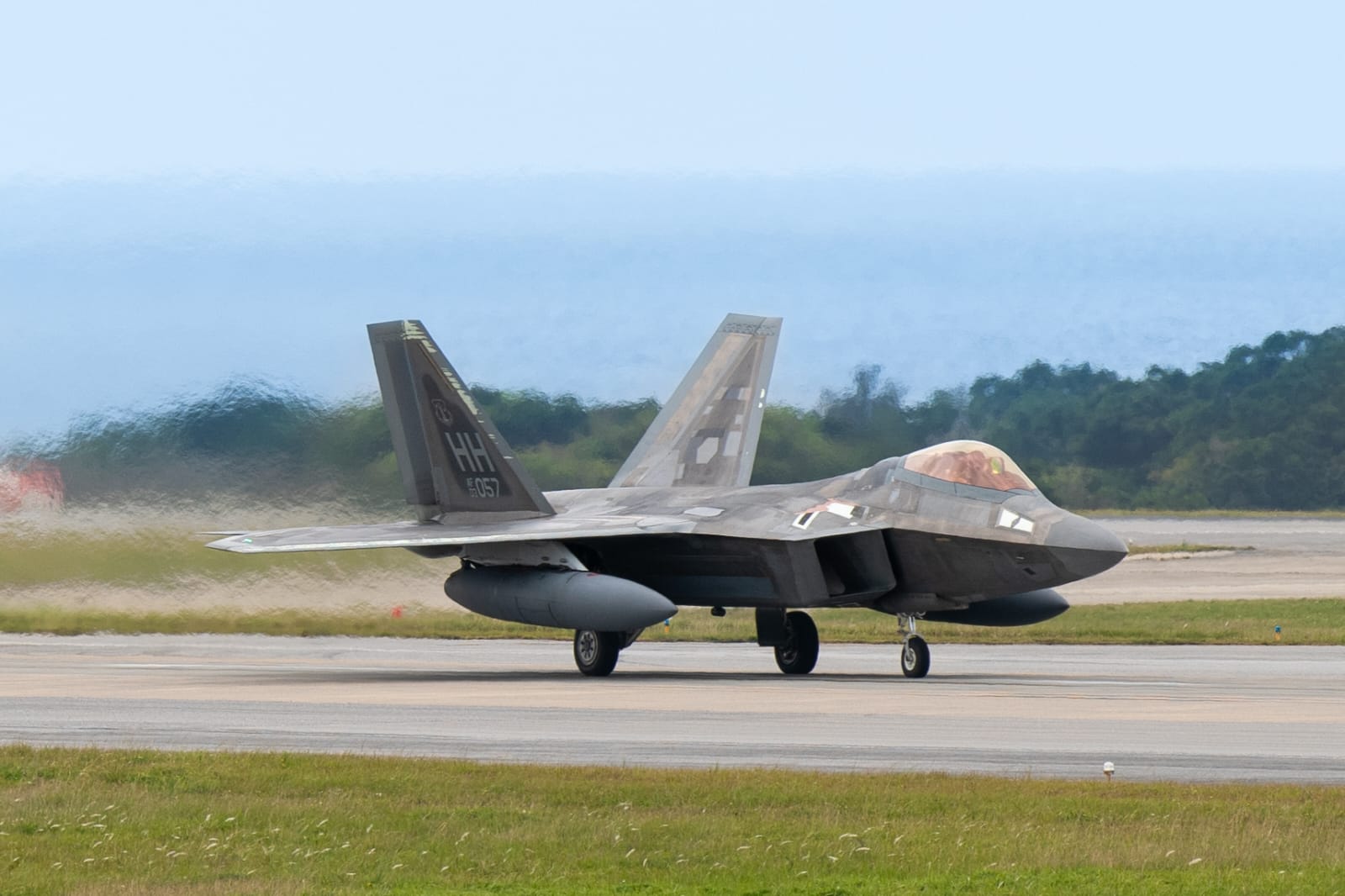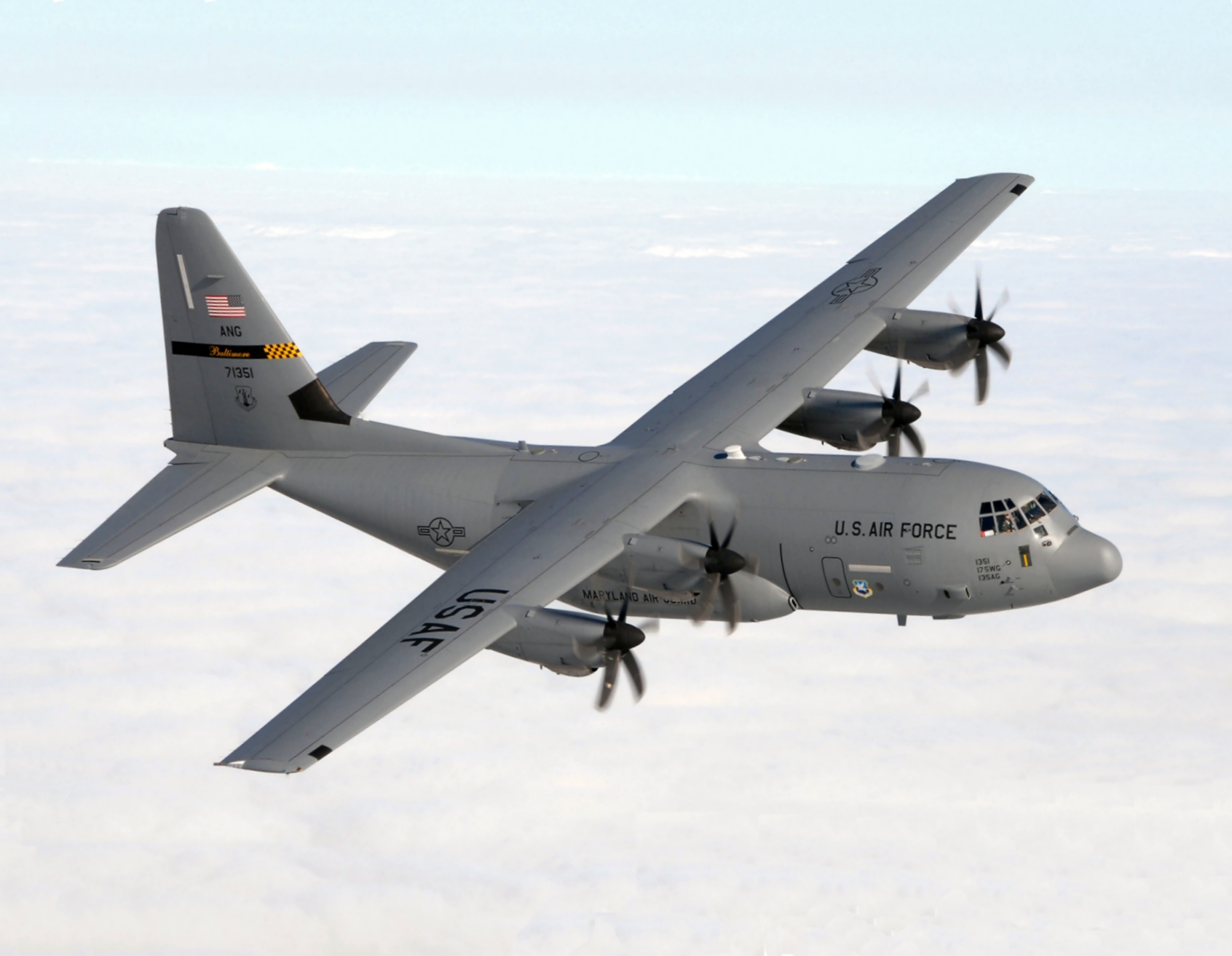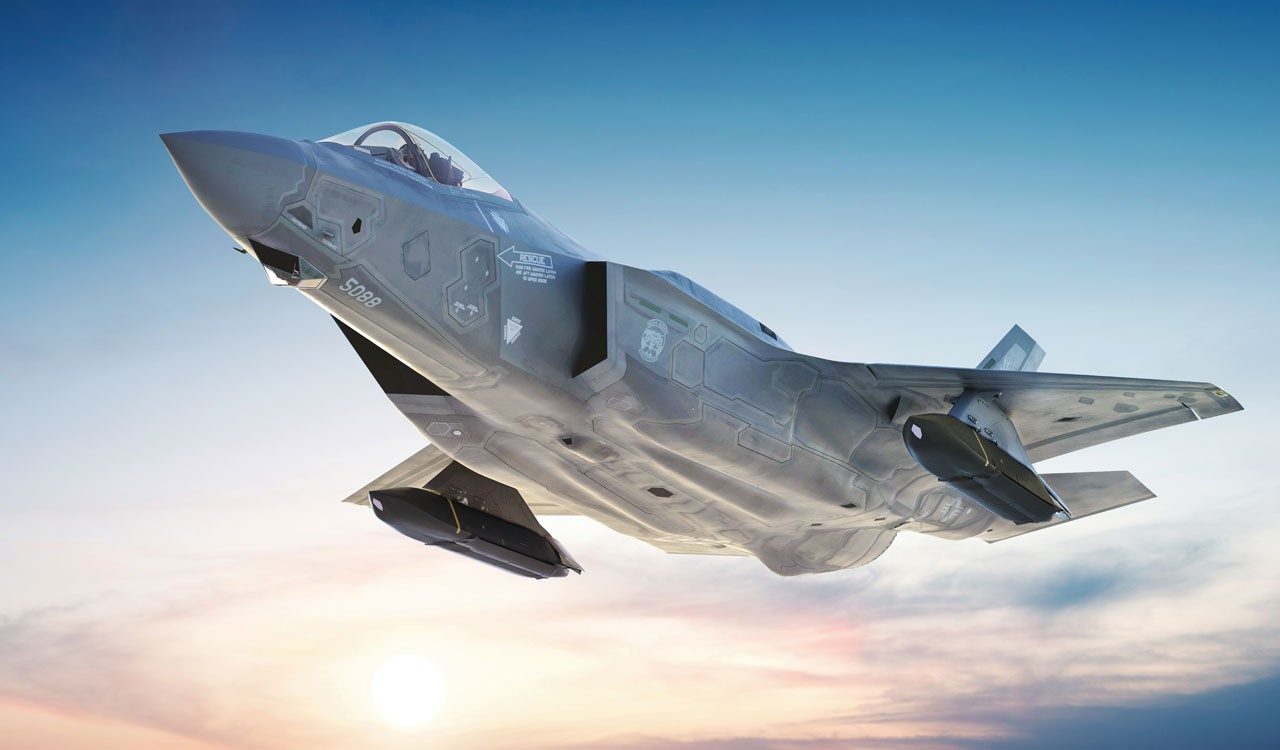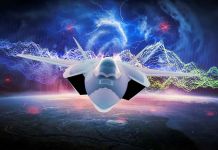As China increases its belligerence around Taiwan and continues to threaten Japan to reinforce its claims of some of the islands, the U.S. Military has started increasing its presence in the region. The U.S. Air Force (USAF) recently moved F-22 Raptors, the formidable fifth-generation fighters, to the Kadena airbase in Japan, not too far from the Chinese mainland.
The U.S. is working closely with regional allies South Korea and Japan to boost military capabilities. More importantly, pro-US President Ferdinand Marcos, Jr. led the Philippine government in working closely with the U.S. to create many new military bases.
It is time to examine these and see how they impact the power balance.
U.S. Indo-Pacific Command
The U.S. Indo-Pacific Command (USINDOPACOM) is the oldest and largest unified combatant command of the U.S. armed forces and is responsible for the entire Indo-Pacific region.
The 375,000 service personnel are expected to secure more than 260 million sq. km, or roughly 52 percent of the Earth’s surface, stretching from the West Coast of the United States to the East Coast maritime borderline waters of India and from the Arctic to the Antarctic.
The Indo-Pacific Command consists of the component commands of the U.S. Army, Marines, Navy, and Air Force. It also includes U.S. Forces in Japan and Korea.
There is a standing joint task force, massive elements for Special Operations and Joint Intelligence Operations, and a Center for Excellence in Disaster Management and Humanitarian Assistance. The Nimitz-MacArthur Pacific Command Center, located on Camp H. M. Smith in Hawaii, serves as the headquarters for the Indo-Pacific Command.
The U.S. Pacific Fleet has close to 200 ships. It has two aircraft groups and can muster up to five carrier groups.
The US Marines have two Expeditionary Forces with 86,000 personnel and 640 aircraft. The US Pacific Air Forces have 420 aircraft. The U.S. Army Pacific has 106,000 personnel plus 300 aircraft and five watercraft. There are nearly 1,200 Special Operations personnel.
U.S. Assets In Alaska
The U.S. has significant radars, long-range missile sites, and airbases in Alaska, all of which will support combat operations in the northwest Pacific. Some of these extend into the 1900-kilometer-long Aleutian Islands chain, not far from the Eastern Russian Komandor Islands, which, too, are part of the same island chain.
Naval Base Guam
Guam is 2,751 km east-south-east of Taiwan. Part of Joint Region Marianas, the U.S. Navy (USN) Strategic Base Guam has the very large Apra Harbour that is part of the Orote Peninsula.
The harbor can accommodate USN supercarriers like the USS Nimitz (CVN-68). In 2009, it was combined with Andersen Air Force Base to form Joint Region Marianas, a Navy-controlled joint base.
There is a ship repair facility. The Naval Base is also home to a submarine squadron, a Coast Guard Sector, and a Naval Special Warfare Unit.
It is the home base to dozens of Pacific Command, Pacific Fleet, Seventh Fleet, and Seabee units. Guam maintains the Seventh Fleet’s submarines and supports the Naval Support Facility at Diego Garcia.
Earlier called Naval Operating Base and later nicknamed The Pacific Supermarket, the base has seen large expansion over the years. The 7th Fleet’s Navy Expeditionary Forces Command Pacific is also headquartered here. The base also has naval munitions storage and maintenance facilities.
F-16s “Sitting Ducks” For Russian MiG-31 Fighters? Putin Warns Of Consequences Over Fighting Falcons
Andersen Airbase Guam
The USAF Andersen Air Force Base is part of the 36th Wing under the Pacific Air Forces Eleventh Air Force. Established in 1944 after the Liberation of Guam as North Field, it is named for Brigadier General James Roy Andersen (1904–1945).
The airbase was extensively used during the last year of WW II to launch B-29 Superfortress bombing missions against Japan. The Wing today provides support to deployed air and space forces of the USAF and other friendly foreign air forces.
The naval and Air bases are about 48 km apart at opposite ends of the Island. The airbase was used to launch many missions during the Korean and Vietnam wars.
It is the most important U.S. air base west of Hawaii. It is one of the four Air Force Bomber Forward Operating Locations and the only base in the Western Pacific that can permanently service U.S. heavy strategic bombers, including B-1B, B-2, and B-52 bombers. Andersen is one of two critical bases in the Asia-Pacific region, the other being Diego Garcia in the Indian Ocean.
The base was also one of the few places in the world where the NASA Space Shuttle was permitted to land, serving as an Augmented Emergency Landing Site for the Shuttle orbiter. B-2s and B-52 aircraft squadrons have taken turns in order to provide a continuous bomber presence at the base.
In 2017, North Korea threatened to strike the Island. The U.S. moved nearly a million munitions within a month to counter such an eventuality.
Since 2019, the main operational and flying units on the base included the 36th Wing (PACAF), elements of the 624th Regional Support Group, the 734th Air Mobility Support Squadron, 69th Reconnaissance Group, flying the Northrop Grumman RQ-4 Global Hawk, and a Helicopter Sea Combat Squadron of USN flying the Sikorsky MH-60S. There is Task Force Talon, a U.S. Army, E Battery, Air Defense Artillery Regiment THAAD, and support elements.
The USAF no longer permanently bases strategic bombers outside the continental United States. B-1B Lancer, B-2A Spirit, and B-52G Stratofortress aircraft deployed to Guam on a rotational basis.
The United States Space Force has the 21st Space Operations Squadron. The USAF proposes upgrading Guam to host a dozen Singaporean F-15s for training. Many U.S. fighters come to Guam for major exercises such as “Cope North.”
MiG-31 & Vympel R-37M – A Deadly Combo That Ukraine’s F-16 Fighters Can Challenge But Not Defeat
U.S. Military Bases in Japan
The United States Forces Japan (USFJ) has been active since 1957. It forms a subordinate unified combatant command under USINDOPACOM with nearly 50,000 personnel, with headquarters at Yokota Air Base near Tokyo. The USFJ is meant to defend Japan as per the security treaties between the United States and Japan.

18 Wing Public Affairs/US Air Force.
The United States Seventh Fleet is based in Yokosuka, Kanagawa Prefecture. The III Marine Expeditionary Force is based in Okinawa. A significant number of USAF fighters are stationed at Misawa and Kadena airbases. Japan compensates 75 percent of U.S. basing costs. Okinawa makes up only 0.6 percent of Japan’s land area, but 62 percent of United States bases in Japan (exclusive use only) are on Okinawa.
On Okinawa, U.S. military installations occupy about 10.4 percent of the total useable land. Approximately 74.7 percent of all the U.S. military facilities in Japan are located on the Island of Okinawa.
The USAF calls the Kadena airbase, home of the 18th Wing, its “Keystone of the Pacific.” U.S. aircraft in Japan are being continuously upgraded. Forty-eight fifth-generation F-35A fighters are gradually replacing the 36 F-16s at Misawa Air Base in northern Japan, and 36 brand-new F-15EX jets deploy to Kadena Air Base on the southern Island of Okinawa, replacing 48 older F-15C/D. The F-22s have been operating from Kadena.
The U.S. government employs over 8,000 local workers, yet there are often protests against the U.S. base on Okinawa Island, and a certain amount of relocation to Guam or other friendly counties has been going on.
Similar protests are going on against Marine Corps facilities at Futenma. The issues include jet-sound noise, marine life issues, and water contamination.
The U.S. also operates C-130s, KC-135 tankers, and P-8A maritime surveillance aircraft. Significant numbers of CV-22 Osprey aircraft are deployed at its Yokota Air Base. There are various other helicopters.

The U.S. military has major facilities at Misawa, Yokota, Kadena, Futenma, Itami, and Tachikawa airbases. There are also many military communications stations spread across Japan.
There is an auxiliary airfield air cargo terminal at Hakata-ku, Fukuoka. There are also Ammunition Storage Areas near Kadena, Hiroshima, and many other places.
Major naval ports are at Yokosuka, Atsuagi, and Sasebo (Nagasaki). Yokohama, Naha, and many other places have port dock facilities. There are many POL Depots. There are armament training ranges. There is a major Marine Corps air station at Iwakuni, Yamaguchi, and Ginowan, Okinawa. There are also joint-use military facilities with Japanese forces.
Japanese Self-Defense Forces have 250,000 Personnel, 150 ships, about 300 maritime aircraft, 750 Air Force aircraft (350 fighters, including F-35, F-15J, F-2A/B), 20 AEW&C & 10 FRA, 20 active air bases, and ten naval aviation bases. They plan to expand further.
United States Forces Korea (USFK)
The USFK has been in position since July 1957. Today, the numbers are around 28,000 personnel (20,000 Army, 300 Naval at Busan Naval Base, 100 each of Marines and Special Forces, and 8,000 USAF HQ at Osan Airbase).
It has been at an all-time low since the peak of 326,863 US personnel in 1953. They are a subordinate unified command under USINDOPACOM. Their Headquarters is at Camp Humphreys, Pyeongtaek, South Korea.
The Major USFK elements include the U.S. Eighth Army, U.S. Seventh Air Force, U.S. Naval Forces Korea, U.S. Marine Forces Korea, and U.S. Special Operations Command Korea (SOCKOR). Their mission is to support the local United Nations Command (UNC). The U.S. Space Forces are collocated with the USAF at Osan.
While USFK is a separate organization from UNC and ROK/US Combined Forces Command (CFC), its mission is to coordinately support both UNC and CFC. U.S. forces have been in South Korea since the July 1953 armistice.
North Korea had repeatedly violated the armistice over the years. After North Korea went nuclear and with its aggressive missile program, it has been engaged in intimidating test firing of its missiles over South Korea and Japan.
The 18th Fighter-Bomber Wing (F-15C/D, KC-135R, E-3B/C, HH-60) and 51st Fighter-Interceptor Wings (A-10s and F-16C/D) are at Osan.
The South Korean Armed Forces have 555,000 active personnel, 150 ships, about 70 maritime aircraft, and 19 Submarines. They also have 740 Air Force aircraft (F-35, F-15, F-16, F-50, F-5, F-4), 8 AEW&C/ FRA aircraft, ten active air bases, and 9 naval bases.

U.S. Bases In Philippines
United States military bases were established in the Philippines on the basis of a treaty signed after the conclusion of World War II and the recognition of Philippine independence by the U.S. The 21 years of Marcos dictatorship (1965-1986) allowed the U.S. to continue with some additional provisions.
But after him, the resurgence of Filipino nationalism was against U.S. bases. Despite the U.S. agreeing to pay compensation of $900 million in 1983 for the next five years, the bases had already become a political liability for the Aquino government.
The bases established under the original treaty were discontinued in 1991 and 1992 after the Senate of the Philippines narrowly rejected a new treaty that would have allowed some of the bases to continue for another ten years.
In July 1991, the U.S. and Philippine negotiators drafted a new agreement titled the Treaty of Friendship, Peace, and Cooperation between the two countries, proposing the clean-up and turnover of Clark to the Philippine government in 1992 and extending the lease of Subic Bay Naval Base by the U.S. for ten years. The eruption of Mount Pinatubo in June 1991 also influenced the United States’ decision to abandon the nearby Clark Air Base, which was heavily damaged by ash emissions and lahar flows.
In November 1991, the U.S. government formally turned Clark over to the Philippine government, which transformed the airfield into Clark International Airport. The Subic Bay Naval base was deactivated in 1992.
The Philippines–United States Visiting Forces Agreement came into effect in May 1999 and the Enhanced Defense Cooperation Agreement came into effect in April 2014 for ten years.
This allowed U.S. forces and contractors to operate out of “agreed locations.” In April 2015, the United States government asked for access to eight bases in the Philippines, including the formerly American Subic Bay Naval Base and Clark Air Base, as well as locations in Luzon, Cebu, and Palawan. Finally, the Philippines agreed on 5 locations for military bases.
These included, Antonio Bautista Air Base (Palawan), Basa Air Base (Pampanga), Benito Ebuen Air Base (Cebu), Fort Magsaysay (Nueva Ecija), Lumbia Airport (Cagayan de Oro).
In February 2023, four additional locations of military bases were designated under the EDCA. These were Balabac Island (Palawan), Camp Melchor Dela Cruz (Gamu, Isabela), Lal-lo Airport (Lal-lo, Cagayan), and Naval Base Camilo Osias (Santa Ana, Cagayan).
However, the governors of Isabela and Cagayan, which together host three of the bases, expressed dismay at the agreement, stating they had not been consulted on the sites and did not want their provinces to pay too much for the infrastructure improvements or become potential targets of Chinese nuclear attack.
Conclusion
There is a sizeable U.S. presence in the three important countries, Japan, South Korea, and the Philippines that face the East and South China Seas (SCS). Japan and South Korea have sizeable forces, and their defense expenditures are going up, which will increase their capabilities.
The Philippines was most affected by Chinese aggressive designs in the SCS. In fact, they had to go to the International Court of Arbitration.
The United States Taiwan Defense Command (USTDC) was a sub-unified command of the United States Armed Forces operating in Taiwan from December 1954 to April 1979. At its peak in 1971, it had 8,565 military personnel on the Island.
The Mutual Defense Treaty between the United States and Taiwan was a defense pact effective from 1955 to 1980. It was intended to defend the Island of Taiwan from invasion by China.
Some of its content was carried over to the Taiwan Relations Act of 1979. Since the formal U.S. recognition of China in 1979, the Act has defined the officially substantial but non-diplomatic relations between the U.S. and Taiwan.
The Taiwan Policy Act of 2022 promotes Taiwan’s security, ensures regional stability, and deters China’s aggression against Taiwan. It also threatens severe sanctions for hostile action against Taiwan.
The Taiwan Policy Act of 2022 creates a new initiative to bolster Taiwan’s defense capabilities, providing almost $4.5 billion in security assistance over the next four years and designating Taiwan as a “Major Non-NATO Ally.”
Nowadays, there are around 100 US military advisers in Taiwan at any given time. Since the formation of QUAD, there have been increased military exercises in the Indo-Pacific region. With more NATO members getting involved in the region, the military strength against China is becoming significant.
- Air Marshal Anil Chopra (Retired) is an Indian Air Force veteran fighter test pilot and is currently the Director-General of the Center for Air Power Studies in New Delhi. He has been decorated with both gallantry and distinguished service medals while serving in the IAF for 40 years. He tweets @Chopsyturvey
- Follow EurAsian Times on Google News




